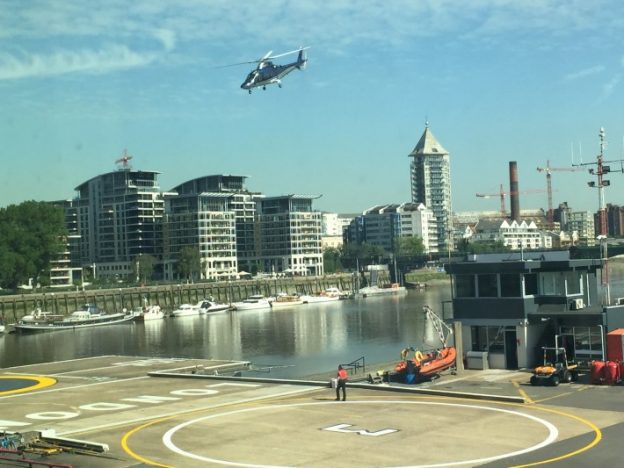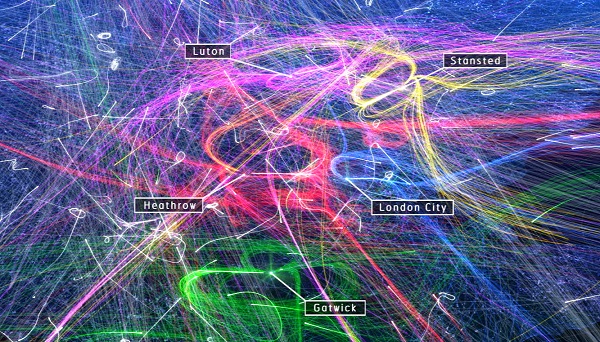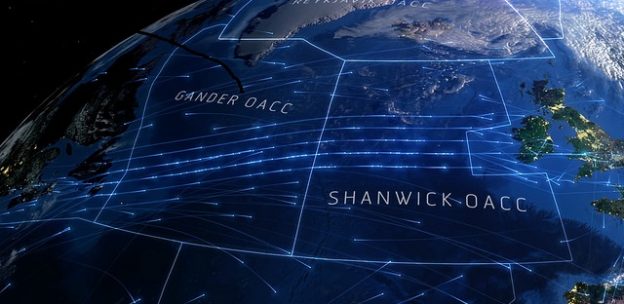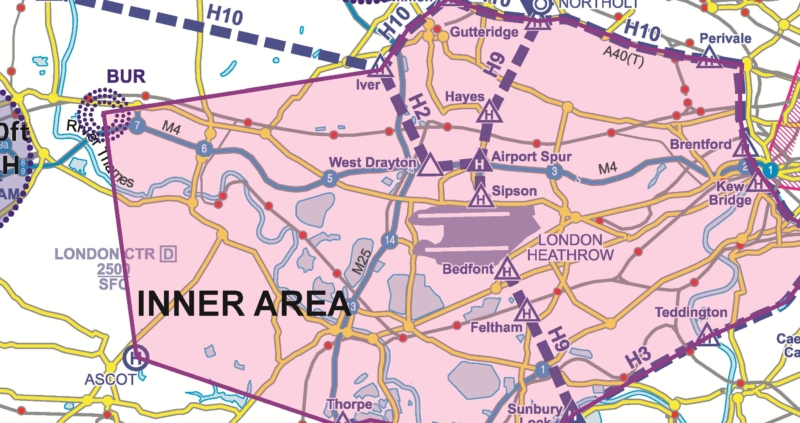Aircraft of all kinds travel through UK airspace – from the mighty A380 through to small helicopters – all of which have to be carefully integrated and managed. Nowhere is this more true than in the skies over London.
The role of the Special VFR (SVFR) controllers at our Swanwick Control Centre is to liaise with the controllers at London Heliport to ensure the safe arrival, departure and transit of the helicopters over our bustling capital.
The heliport – historically known as “Battersea”, after its location – has its own volume of airspace that sits within the wider airspace controlled by NATS; the latter being established primarily to protect the much larger aircraft operating at Heathrow and London City airports. Being based on the riverside and within close proximity to routes supporting Heathrow and London City, operations integrating the arrivals and departures of helicopters have to be a carefully co-ordinated process.

Helicopters generally fly using Visual Flight Rules (VFR) meaning they navigate via landmarks, rivers, roads and buildings, to guide them through the airspace over London. And you don’t need to spend long looking skyward to see the demand that exists. From TV news crews and high rolling execs through to the police and air ambulances – helicopters are as much a part of the London skyline as Big Ben and the Shard.
Close liaison and coordination takes place daily between the controllers at the London Heliport and those at Swanwick to manage the safe passage of aircraft, to get the latest weather reports, as well as to discuss changes to procedures and the changing cityscape.
The two units liaise especially closely on managing ceremonial flypasts over London or events such as Royal Ascot, Wimbledon, Party in the Park and on larger scale projects such as the London 2012 Olympic Games and Live 8. On a normal busy day with sunny weather, our controllers at Swanwick could be talking to the London Heliport controllers every 10 minutes.
I recently attended the Heli-Ops Conference at The London Heliport where people in the commercial, military, emergency services, design and media sectors of the industry discussed the issues affecting the future of helicopter operations.
As London continues to grow outwards and upwards, and as new European rules come into effect increasing the minimum distance between helicopters and buildings at night, the aviation industry as a whole is going to have to look at and tackle these issues together.
A key aspect of the conference was the impact of changes to operating rules as a consequence of the UK and all other European States adopting the Standardised European Rules of the Air (SERA). These rules affect the operation of helicopters and small aircraft over London and across the UK. Under the new rules a helicopter operating under VFR at night, and which is not following a published route, now has to remain 1,000 feet above the highest fixed obstacle within 8 kilometres of its route. This was previously defined as 1,000 feet above the highest obstacle within 600 metres of the aircraft’s route. This change can have a profound impact on what clearances controllers can give to aircraft at night.
It is however, still the pilot’s responsibility when operating under VFR for the aircraft to remain clear of obstructions, buildings and ground obstacles at all times. Such rules affect where helicopters can fly and how they route to and from London Heliport, all of which needs a high degree of understanding and coordination between both units.
London Heliport plays a hugely important part in supporting business in London and for supporting emergency service response in the region. NATS supports and plays an important part too in ensuring the Heliport’s operations remain safe in an ever changing city environment.
Comments
Please respect our commenting policy and guidelines when posting on this website.




